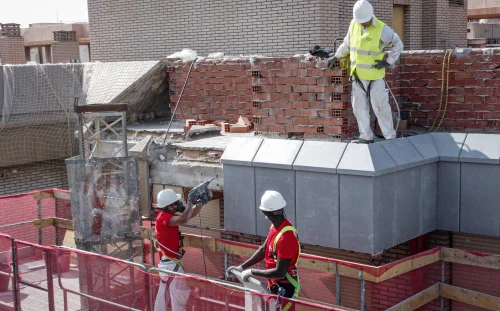Efficient construction planning and scheduling constitutes one of the fundamental pillars for the success of any construction project. Proper time management not only guarantees the fulfillment of deadlines but also optimizes resources, reduces costs, and minimizes risks. In this article, our technical team at personalHOME details the best practices that professionals and companies in the sector can implement to achieve successful construction planning.
Preliminary Phase
Before starting any scheduling, it is essential to have a precise definition of the project scope. This includes setting clear and measurable objectives, establishing detailed and specific deliverables, outlining the project boundaries, and agreeing on acceptance criteria.
Furthermore, in this preliminary phase, it is crucial to thoroughly review the technical project documentation, including plans, quality specifications, technical specifications, and contractual documents, to identify potential inconsistencies or information gaps that could become serious problems during construction.
Planning Phase
This stage can begin with a detailed Work Breakdown Structure (WBS). This breakdown allows the project to be divided into smaller and more manageable tasks, which facilitates the assignment of responsibilities, the estimation of time and costs, and progress monitoring.
Another important factor in the planning phase is risk identification and management, which anticipates potential problems that may arise (delays in material delivery, adverse weather conditions, geotechnical issues, etc.) and develops mitigation plans to minimize their impact. To ensure excellent planning, a perfect communication plan is needed, establishing how the project team will communicate, how often, and with whom.
On the other hand, a good definition of key milestones must be carried out, identifying the important control points in the project to measure progress and ensure that overall deadlines are met. These milestones should be Specific, Measurable, Achievable, Relevant, and Time-bound (SMART).
Scheduling Phase
Once the previous two phases are configured, the scheduling phase proceeds. In this phase, the creation of schedules and diagrams such as Gantt charts is vitally important. Information from the WBS and estimates is used to create a realistic roadmap that shows the sequence of activities, their durations, dependencies, and start and end dates.
It is also important to schedule a critical path method, which allows the identification of the sequence of activities that determine the total duration of the project.
Monitoring and Control Phase
This last phase is as important or even more important than the previous ones, as it verifies that the three previous phases have been carried out correctly and identifies potential improvement actions. Schedules should be updated periodically (weekly or bi-weekly) to reflect actual progress, deviations, improvement actions, and approved changes.
Within this phase, a earned value analysis should also be carried out, which integrates scope, schedule, and resources to evaluate project performance using indicators such as: Schedule Variance (SV), Schedule Performance Index (SPI), and completion forecasts. For all four phases in construction planning and scheduling, the use of specialized construction technology is no longer optional. Platforms such as Primavera P6, Microsoft Project, Asta Powerproject, or collaborative tools like BIM (Building Information Modeling) enable more precise planning and more effective management.























